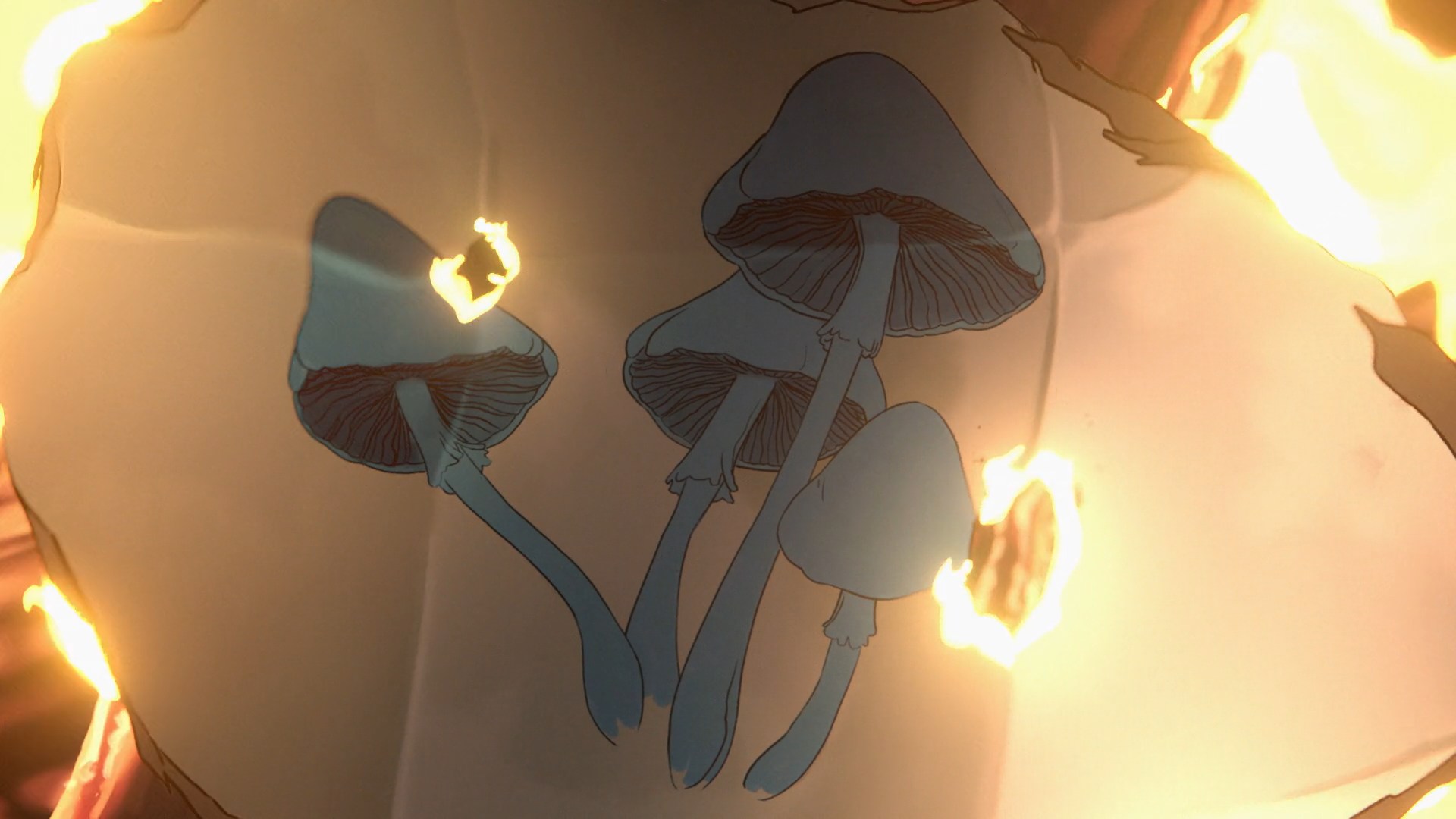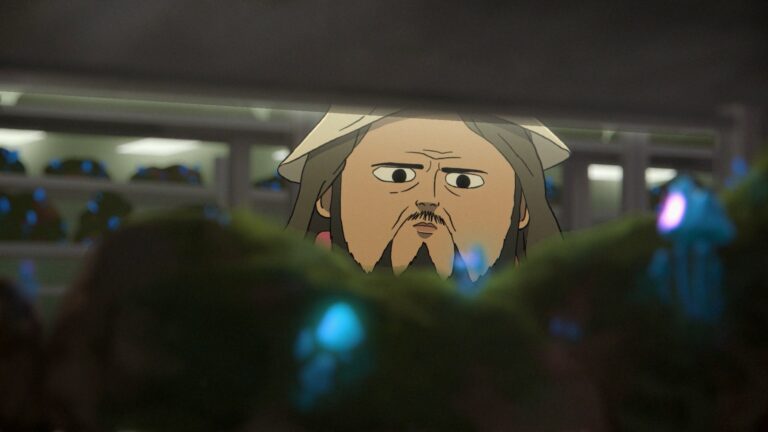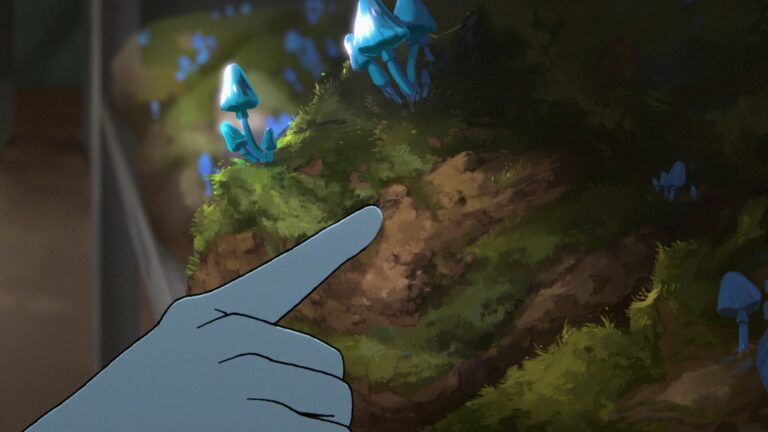When you think of television’s wildest visual journeys lately, you can’t skip over “Common Side Effects.” And, if you’ve fallen down its psychedelic rabbit hole, you’ve already felt the impact of storyboard artist Chadwick Whitehead — even if you didn’t spot his name flying by in the credits. For eight episodes, this wizard of the pencil quietly shaped the chaos, mapping each reality-bending moment before a single frame flickered to life. Sure, the creators dreamed up Texas-sized oil intrigue and mind-tripping mushrooms. But Whitehead? He laid down the tracks the rollercoaster rides.
Diving Into Chadwick’s Toolbox: Nothing Basic Here
Let’s be clear: storyboarding for “Common Side Effects” isn’t your usual paint-by-numbers gig. With wild shifts from everyday banter to off-the-wall hallucinations, each minute demanded precision. Chadwick didn’t just sketch; he orchestrated — like a conductor with a fever dream for a score.
Here’s where his craft really takes off:
- Establishing scenes: Chadwick often opens on wide, sweeping shots. This plugs viewers into the Texas landscape or into a character’s whipped-up mental state. You need to know where you are before things spiral, right?
- Switching perspectives: He hops from tight close-ups — catch a bead of sweat or a doubt flickering in the eyes — to sprawling visuals that swallow up the frame. The contrast yanks viewers deeper. It’s not just a visual trick; it mirrors the story’s see-saw moods.
- Moving the “camera”: In animation, the “camera” is whatever Chadwick says it is. He’s fond of tracking shots, which slide along with the action, and dolly zooms that turn up the tension. It’s an old-school trick. But wow, does it fit the spirals of mushroom-fueled mayhem.
And here’s a tasty bit — he plays with composition, not just to look cool (though, bonus, it absolutely does), but to guide what you notice. He’ll cluster props in the corner if he wants you to feel off-balance, or stick a looming tree front and center when the mood takes a turn for the sinister. Every squiggle counts.
Surreal Sequences: Whitehead Goes Full Psychedelic
Let’s talk mushrooms — the fictional Blue Angel strain, to be specific. These aren’t your dad’s fungi. When a character gives them a nibble, the show cuts all brakes and chucks realism out the window. The walls drip. Faces melt. Texas feels like Mars.
This is where Whitehead’s storyboards shine. Surreal sequences skirt the line between chaos and clarity. With too much visual noise, the story would crash. But Chadwick maps out each transformation beat by beat, like a lucid dreamer keeping a diary. Here’s what really sets him apart:
- Rhythmic flow: He knows when to speed things up and when to drag a moment out. That’s why you can almost feel time warp during those psychedelic benders.
- Logical visual transitions: Even as reality unravels, each shot links naturally to the next. He’ll dissolve a character’s face into a swirl, then morph that swirl into the shape of a passing oil tanker. Wild, but weirdly logical.
- Color and shape: While the final palette isn’t his call alone, Chadwick suggests dramatic color shifts and shape distortions right in the boards. Animators then take his cues and run wild.
For example, in that Season 1 mega-trip at the pipeline protest, you go from wry workplace comedy to full Salvador Dalí meltdown. The transition doesn’t just “happen.” Chadwick walks the animators there, frame by twisted frame.
Teamwork Makes the Dream Work
Chadwick’s not in this alone, obviously. “Common Side Effects” may showcase a specific Texan flavor, but it’s artfully cooked up by an international team. Animators and designers hail from France, Portugal, Spain, and Mexico, all bringing their flavors to the kitchen. Still, it’s Whitehead’s storyboards that act as the recipe. No matter where the animation magic happens, his boards lay down the same blueprint.
- Clarity rules: His storyboards cross language barriers. French animator? Portuguese designer? Doesn’t matter. The pictures lay out pace, emotional beats, even the timing of a character blink or gasp.
- Consistency: With the artists scattered worldwide, Chadwick’s vision keeps the vibe consistent. That’s not as easy as it sounds — especially given the tug-of-war between comedy and those darker oil-slick twists.
His boards become the “glue” that binds each sequence, so an acid-trip in one episode doesn’t jar when lined up next to office hijinks, or a thriller-y shoot-out near a Texas derrick.
Mixing Genres Like a Pro
What’s especially cool about Chadwick’s work on CSE? He juggles genres without dropping a single flaming torch. The show leaps from Saturday morning cartoon silliness straight into scenes worthy of a dark Coen brothers caper. It’s a wild ride, but it never gets confusing or muddy.
Through all that, Chadwick’s pacing choices keep things snappy. When a joke lands, he gives it room to breathe. When the tension spikes, he closes in, tight and claustrophobic. During those wild, surreal journeys, he lets the storyboard “camera” drift, dreamlike, so viewers float along.
And those surreal setpieces? Look closer! His boards economically signal which details should shimmer, what should warp, and what needs to stay sharp. It’s all about giving surrealism shape.
A Bridge Between Madcap Ideas and Finished Art
Let’s not forget, the creators — Joseph Bennett and Steve Hely — dream big. They want scenes that nod to Paul Stamets brainy mycology research, and that channel Coen-esque black comedy. Whitehead is the bridge from wild premise to finished art.
If Bennett or Hely want an oil rig to transform into a psychedelic creature (hey, why not?), Chadwick pieces together how it’s possible, second by animated second. He breaks out not just a shot list, but acts as referee for what’s doable inside the tight production window.
Going Beyond Pretty Pictures: Why His Work Matters
Some folks think storyboards are all about looking cool. But Chadwick’s work does so much more:
- He wrangles pace so that jokes don’t get lost and tense moments get their due.
- He balances abstract and real-world action, so the story still makes sense when the visuals go nuts.
- He acts as “translator” for the show’s massive, multinational animation team.
And because his boards get made early, the entire creative crew — voice actors, editors, colorists — knows what mood to deliver and when. It’s a constant visual North Star.
From Board to Broadcast: The Journey
Still, making “Common Side Effects” is a complex relay. After Chadwick wraps a set of boards, things move fast. Here’s a quick rundown:
1. Animators create rough passes, checking pacing and big beats against Chadwick’s vision.
2. Directors review, tweaking as needed for clarity or punch.
3. Full visual polish comes last, merging Chadwick’s blueprint with wild color and movement.
That’s how a joke about a misplaced badge or a trip-fueled U.F.O. sighting lands with just the right bang.
Whitehead’s Mark on Modern Animation
Put simply, Chadwick Whitehead’s fingerprints are all over CSE’s most unforgettable scenes. He brings the creators’ craziest visions back to Earth just long enough for audiences to enjoy. He plants visual guideposts so viewers won’t get lost — even when the story spins off into psychedelic freefall.
Online, storyboard nerds have picked up on this. There’s fresh buzz, from Reddit threads to Twitter deep dives, about Whitehead’s American-Southwestern visual cues, his love of negative space, and his “see-saw” approach to pace. Even casual viewers sense something — though they might not know what to call it besides “wow, that was a trip.”
The Storyboard Sorcerer’s Legacy
Without Chadwick Whitehead, “Common Side Effects” might have felt more like a bag of loose puzzle pieces than the tight, trippy, Texas tall-tale it’s become. So next time you hit play and the screen slips from suburban normal to surreal nightmare and back, think of the guy who made it all stick together.
Some shows only let you watch. Thanks to Chadwick and his mighty boards, CSE lets you ride shotgun on every weird, wild turn. Giddy up.




